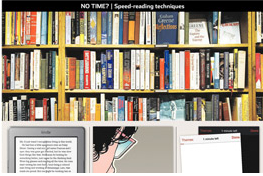Reading these days is often a few minutes on the phone in the grocery-store line, not an hour curled up with a book on the couch. This quick-hit reading is sparking a renewed interest in the art of speed reading.

(How fast do you read? Time yourself and try speed-reading tips in an interactive.)











